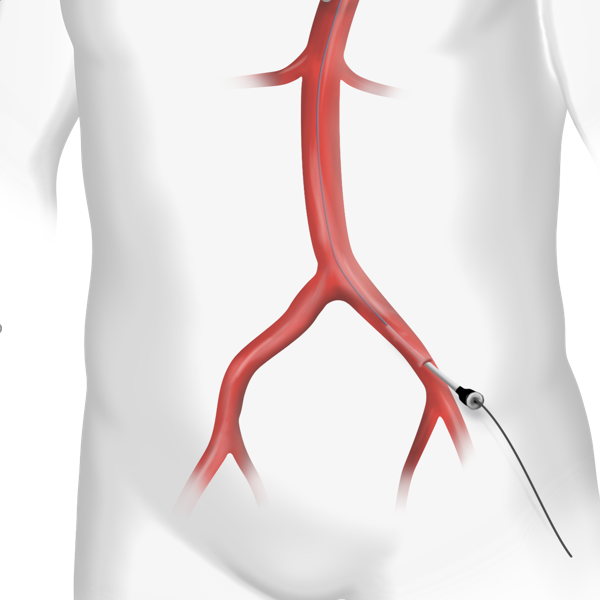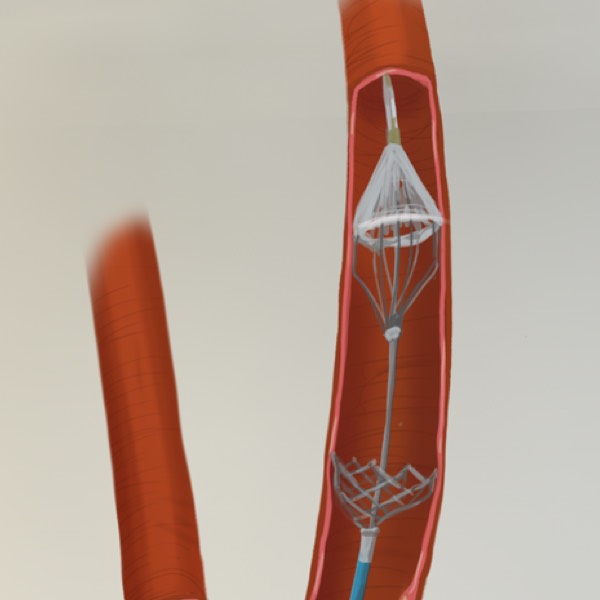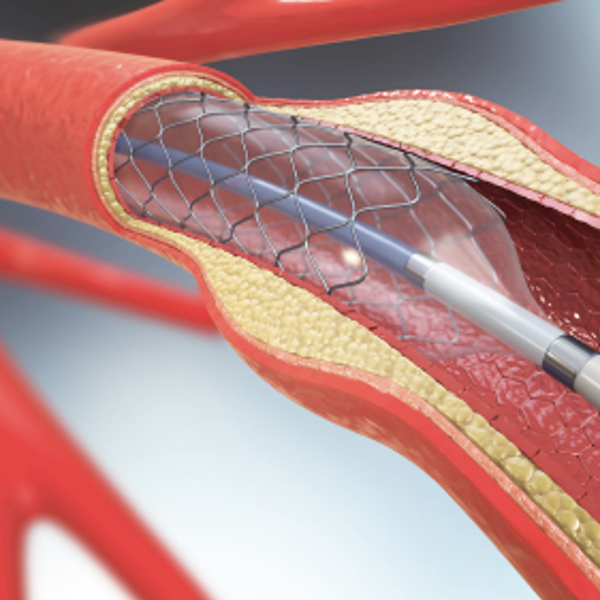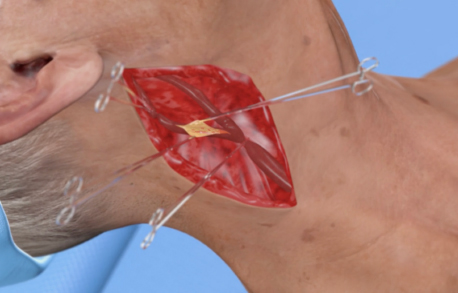Transfemoral Carotid
Artery Stenting (TF-CAS)
Carotid artery disease treated with a stent
through the upper leg
Transfemoral Carotid
Artery Stenting (TF-CAS)
Transfemoral
Carotid Artery
Stenting (TF-CAS)
What is Transfemoral Carotid Artery Stenting (TF-CAS)?
Transfemoral carotid artery stenting is another carotid artery blockage treatment option for patients at high risk for open surgery. This alternative treatment option allows your physician to complete the procedure through a tube placed into an artery in your upper leg.
How Is Transfemoral Carotid Artery Stenting Performed?
A wire device is inserted in an artery in your leg and is guided to your carotid artery. A mesh-like tube called a stent is placed to help decrease stenosis, increase blood flow and prevent future strokes.

Stenting System Enters Artery in the Groin
The system is first introduced through an artery in the groin (femoral artery).

Wire Travels Through the Body
A wire is guided from the artery in your groin, through your abdomen and chest, up to the blockage in your carotid artery.

Stroke Preventing Device is Inserted
A small umbrella-like filter is placed beyond the diseased area of the carotid artery to help limit pieces of fatty buildup (plaque) from traveling towards your brain throughout the procedure.

Fatty Buildup is Caged Against Artery Wall
Your specialist will use a small mesh-like tube called a stent to cover the fatty buildup and keep the artery open. Caging the fatty buildup against the artery wall with the stent is designed to reduce the potential for a stroke after the procedure.
What Are The Risks Involved with Transfemoral Carotid Artery Stenting?
A potential complication of transfemoral carotid artery stenting is a stroke during the procedure itself. Studies have shown a higher risk of stroke during transfemoral carotid artery stenting when compared to carotid endarterectomy and TCAR. TCAR, another minimally invasive form of stenting, has a lower stroke risk due to direct access to the carotid artery in your neck versus having to go through the artery in your upper leg. TCAR also has a robust system intended to keep any stroke-causing material away from your brain during the procedure.

Additional Carotid Artery Disease Treatment Options

Medical Therapy
Managing your carotid artery disease with medication.

Carotid Endarterectomy
Surgical treatment option to reduce the risk of stroke.

Transcarotid Artery Revascularization
Minimally invasive option to treat carotid artery disease.
Insurance and Medicare Coverage for Transfemoral Carotid Artery Stenting
Transfemoral carotid artery stenting is covered by insurance depending on your risk factors, your symptoms, and percentage of stenosis. Talk to your doctor to see if transfemoral carotid artery stenting is a suitable option for you and if you are eligible to receive coverage for it.

Diagnosed with Carotid Artery Disease?
Search physicians and practices that perform carotid artery surgery using the latest technology